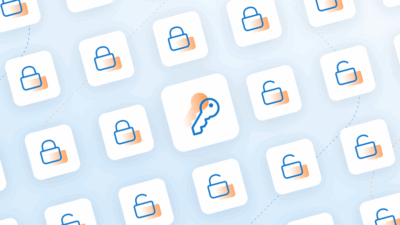Localized pricing helps software and SaaS companies expand their customer base and increase conversions. When price localization isn’t a part of your growth strategy, it limits long-term growth and prevents your business from reaching customers that want your products and services.
When your website and pricing are localized, customers also have less confusion and fewer objections, which leads to a more seamless buying experience (and fewer abandoned carts and stale deals). To sum it all up, localization accelerates business development. That’s why it’s vital to incorporate price localization at each stage of your growth strategy.
What Is Price Localization?
Price localization is essentially the practice of tailoring your company’s pricing strategy to local markets. “Localizing” refers to a number of things. It includes changing the sale price to be displayed in local currency, adjusting based on purchase power, establishing buyer characteristics, price sensitivity, buying history, browsing history, willingness to pay, and loyalty.
Two Types of Price Localization:
- Cosmetic localization is the bare minimum you should be doing. It is the simple act of making sure the currency symbol being displayed matches your buyer’s location. For example, a buyer in the United States would see dollars while a buyer in Germany would see Euros.
- True localization goes beyond the cosmetic display. You begin to build a strategy around pricing and your buyer’s locations. You dive deeper into your buyer’s behaviors, analyze their willingness to buy, and adjust your pricing accordingly.
Why Is Price Localization Important?
Price localization is a key part of international growth and cross-border selling. To stay relevant in these markets, you need to be able to serve your audience effectively. Sometimes that includes presenting prices in their currency, other times it includes accepting their regional payment methods and correctly calculating taxes.
Bottom line: Global sounds big and expansive, but it’s made up of many local markets. If you are selling internationally, you need to resonate with these local customers.
Benefits of Localization
- Stronger Personalization: Localized pricing considers the customer’s demographics when developing not only pricing but product pages, cart contents, payment options, and even small details like timestamps.
- Improved Customer Experience: Who doesn’t want good customer service? Price localization offers just that. It shows customers that your business is willing to scale globally to adapt to an international audience.
- Less Cart Abandonment: Quality Checkout Experience = less cart abandonment. Price localization makes the checkout process move smoothly, removing friction for your global customers.
- Simplified Foreign Exchange (Forex): Selling globally means you are going to run into localized currency. With a robust ecommerce platform, exchange rate management is integrated, allowing you to sell worldwide without any extra steps. Don’t struggle with digital taxes and VAT with proper management.
- More Pricing Data: Price localization allows your company to make strategic pricing and product decisions. For your SaaS business, you can track your sales and order history based on country of origin.
- Greater Lifetime Value: Price localization can help you track your buyer’s behavior and determine their lifetime value (LTV). By implementing localized pricing, you can get an inside look at what top countries provide the fastest growth.
Price Localization at Every Stage:
Seed Stage
So you are just starting. You are bootstrapping and figuring out the basics. This stage is the time to do your research. As you are figuring out your ideal customer profile and buyer personas. Look into your pricing, consider how your buyers and prospects engage with it, learn about their willingness to pay, where they live, what they do, and so on. This is how you get closer to product-market fit.
Startup Stage
Now you’re at the early stages of your business and still trying to figure out the right market fit. Does that mean you don’t need to worry about price localization? No. At this stage, you want to start small. Focus on cosmetics, pick a few locations for your business to perfect before moving to more currencies. The trick here is to look for markets with similar purchasing behaviors so you can leverage what you’ve learned to make expansion easier.
Growth Stage
Congratulations, your business is rapidly growing! By now, you should have cosmetic localization figured out. Now it’s time to introduce true localization. This is when your company should be laser-focused on monetization and have a strong pricing strategy. This is especially true for SaaS businesses. As your business grows, you need to be evaluating your lifetime value (LTV). Run experiments, listen to your buyers, and adjust your pricing often so you can deliver exactly what’s needed in these top global markets.
Mature Stage
If you haven’t focused on price localization yet, you could be missing out on huge revenue growth opportunities. You should be thoroughly monitoring your pricing at this stage, have a strong understanding of your global markets and your buyer’s purchasing powers. If you are reading this and haven’t started yet, the longer you wait, the higher the chance you lose momentum internationally.
How Can FastSpring Help?
Overall, price localization shouldn’t be left by the wayside. There is so much competition in the global landscape, you don’t want your checkout experience to exclude a potential buyer because you have yet to localize your pricing. Selling globally is easier than ever before. Take advantage of the features FastSpring can offer. If you are currently or looking into selling globally, check out what FastSpring can offer your business. Book a demo today.
![[Customer Story] Why TestDome Considers FastSpring a Real Partner](https://fastspring.com/wp-content/themes/fastspring-bamboo/images/promotional/2023/FastSpring-TestDome-blog-thumbnail.jpg)








